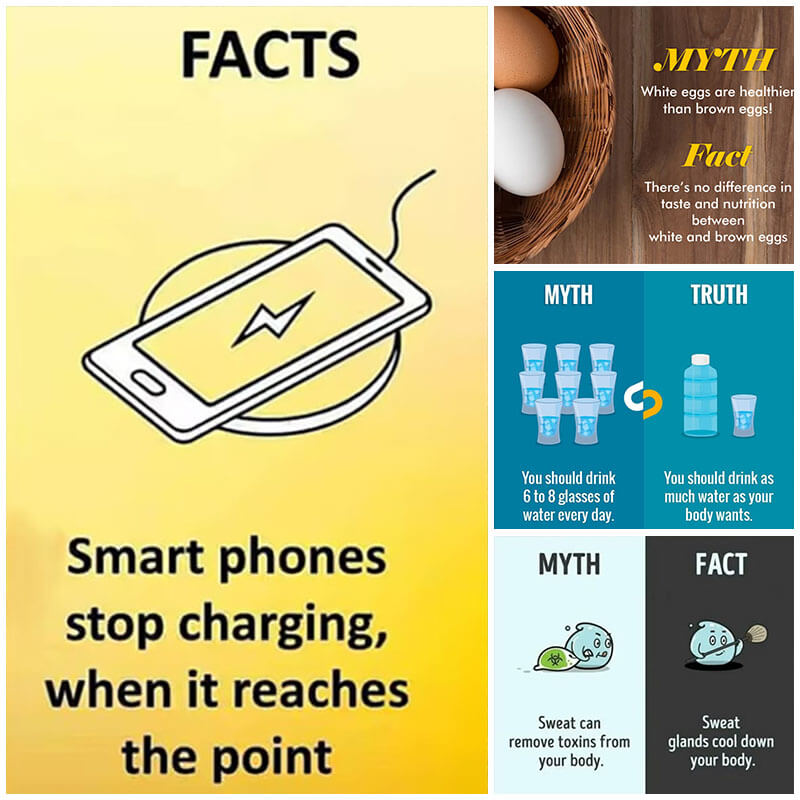
Navigating the sea of information in today's world is like seeking Waldo in a crowded room of look-alikes, a high-stakes game where missteps can leave us red-faced. Yet, beyond the playful analogy, the truth holds even greater consequences. How often have you fallen for myths, like the superhuman vision promise of carrots or the magic of expensive hair products? The line between fact and fiction blurs, but isn't it time we set things straight?
Prepare to embark on a quest as we debunk these age-old misconceptions. In a world inundated with unverified claims, we'll equip you with the tools to separate reality from illusion. Which myths have you unknowingly embraced? It's time to find out and arm yourself with knowledge as we unravel the truths you never knew you needed.
Myth: Gun Silencers Deliver Total Hush
Here comes the classic whisper-quiet gunshot we've heard (or rather, not heard) in movies like "James Bond" and "John Wick." Contrary to cinematic lore, gun silencers—or, more accurately, suppressors—don't render shots totally silent like you see in the movies.

They reduce the noise, sure, but don't erase it. A suppressed shot still packs an audible punch. So, while 007 might make stealthy eliminations look effortless, in reality, he'd be a tad louder. Movies have their sound effects; reality has its sound checks!
Myth: A Few Shocks from a Defibrillator and Your Heart Revives
Hollywood's got a shocker for you! Films like "Casino Royale" and "The Thing" might have you believing defibrillators magically restart flatlined hearts. There’s a favorite, “Awake,” that got everyone believing it really works.
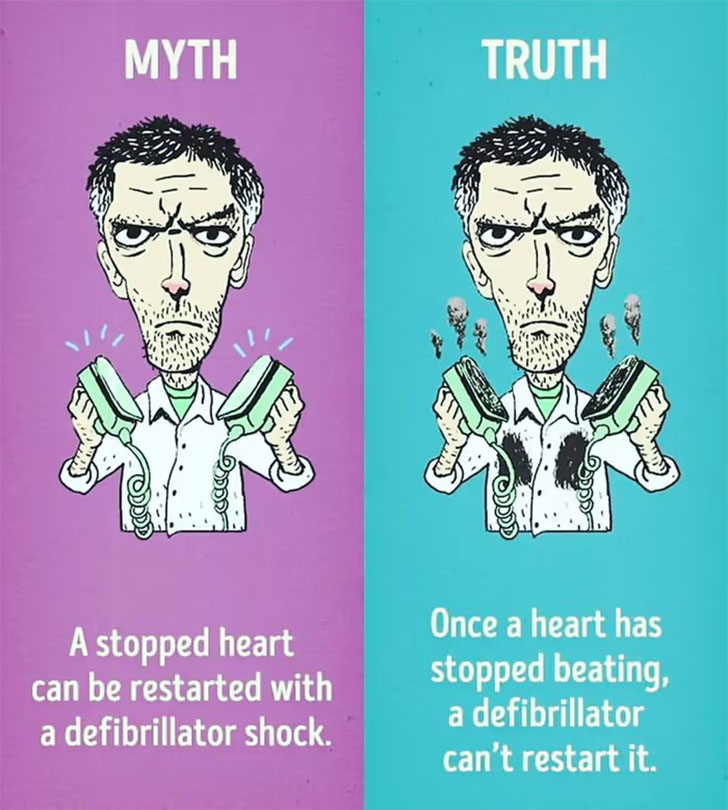
Reality check: they're meant to correct irregular heart rhythms, not kickstart a silent ticker. When the heart goes off-beat, a defibrillator acts like a strict conductor, bringing the rhythm back in line. So, while the movies amp up the drama with electrifying resurrections, remember: it's a beat correction, not a full-blown heart reboot!
Myth: Microwaving Meals Destroys Nutrients
Microwave meals = nutrient wasteland? There’s that boring myth that the radiation from the microwave kills nutriends. Zap that myth! Microwaves cook by agitating water molecules and heating food efficiently.
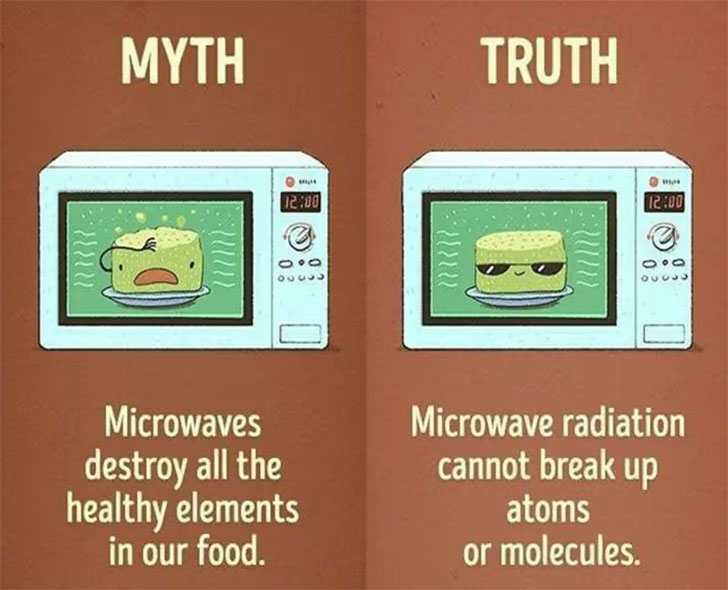
In fact, due to shorter cooking times, they can better preserve certain nutrients than traditional cooking methods. Like any cooking process, some nutrient loss is inevitable, but it's not the microwave's fault. The takeaway? Microwaves aren't nutritional villains; they're just quick-fire chefs! So, nuke with confidence, knowing your veggies are still serving up a healthy punch.
Myth: You Can Pull a Grenade Pin with Your Teeth
Movie heroes make pulling a grenade pin with teeth look oh-so-cool, right? In reality, it's an express ticket to the dentist! Grenade pins require considerable force to remove—far more than your chompers can (or should) muster.
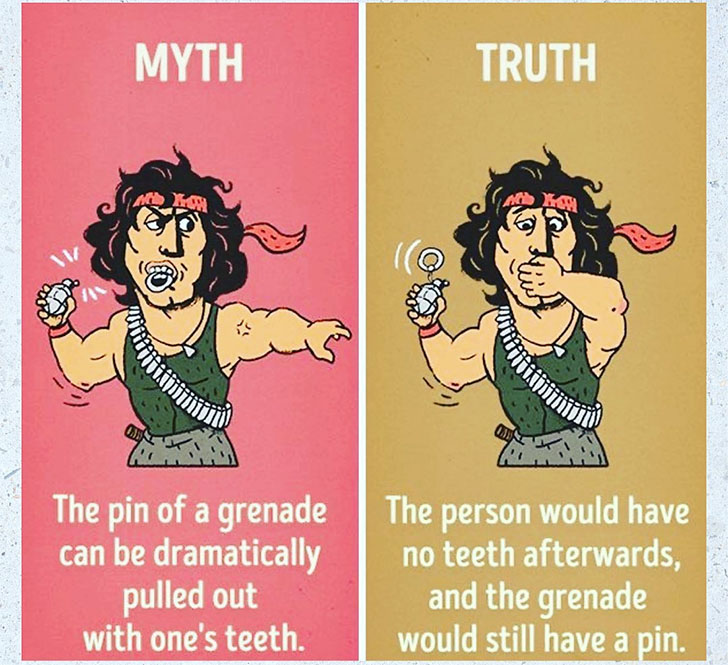
Attempting this Hollywood stunt could result in damaged or lost teeth. Cinema often bends reality for the sake of drama—remember those infinite ammo gunfights? So, while it's entertaining to watch, let's leave the teeth-pulled explosive entrances to the silver screen and keep our smiles intact!
Myth: Skydivers Can Chit-Chat While Freefalling
Dive headfirst into this high-flying fiction: chit-chatting skydivers! Movies might show aerial acrobats exchanging words mid-fall, but in reality, the roaring wind at terminal velocity makes conversation impossible.

Skydivers communicate through predetermined hand signals and body movements. I believe this is where the true “action speaks louder than words” applies. Hollywood's airborne banter? A dose of dramatic flair for cinematic appeal. Remember, while the silver screen might suggest skydivers have windproof vocal cords, in the real sky, actions (or signals) speak louder than words!
Myth: It Takes Seven Years for the Body to Digest Gum
Ever been told that swallowed gum camps in your belly for seven years? This sticky myth has glued itself to our collective psyche, likely because parents needed a fun deterrent for kids. We shouldn’t be swallowing that to start with.
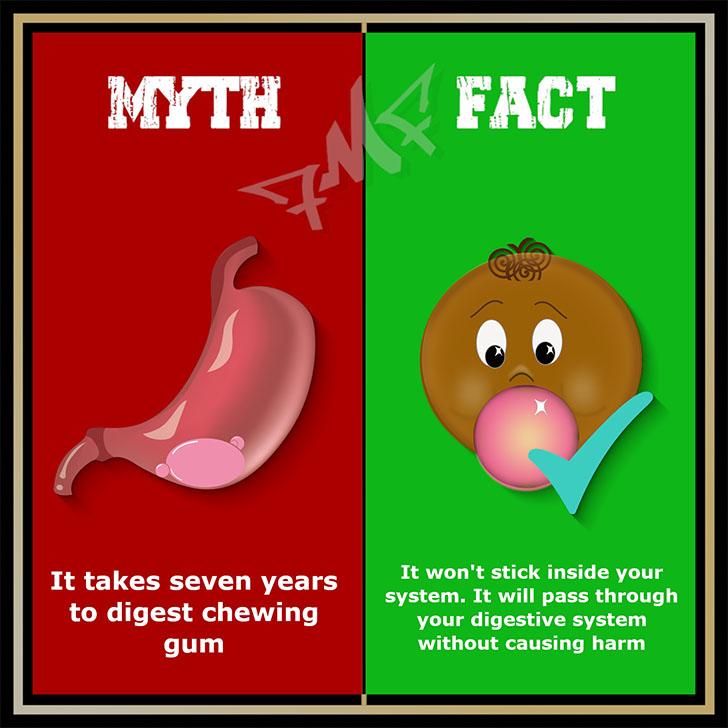
In reality, while our bodies can't fully digest gum's synthetic components, it doesn't linger for nearly that long. Within a day or two, that accidental gum is, well, out. So, while it's not a snack choice, there's no seven-year tummy tenant to fear!
Myth: Cleopatra Hails from Egypt
Hold onto your hieroglyphs! Cleopatra, the famed Egyptian queen, wasn't actually Egyptian by blood. Gasp! Yeah, she is almost always depicted as an Egyptian, but there’s more to her story.

She hailed from the Ptolemaic dynasty, a line of Greek rulers. Yep, that's right—Cleopatra was more Greek salad than Egyptian pyramid. But don't be fooled; she was one of the few in her lineage to embrace and speak the Egyptian language, ruling the kingdom with flair. Ancient history's got plot twists that'd rival any modern drama!
Myth: Your Heart Stops for a Bit When You Sneeze
Ever heard that a sneeze gives your heart an unscheduled timeout? Well, brace for the truth! While it feels like an internal hiccup, your heart doesn't actually skip a beat during a sneeze. Like some would say - it doesn’t stop beating.

Instead, the heart might slightly change its rhythm due to intrathoracic pressure changes. But fear not—your ticker doesn't take a dramatic pause. It’s more like it’s dancing to a different beat for a brief moment. Bless you, heart, for keeping the rhythm—even when we're sneezy!
Myth: You Must Drink Six to Eight Glasses of Water a Day
Is the popular eight glasses a day just a hydration cliché or what science suggests for us? While water is vital, the "8x8" rule isn't one-size-fits-all. Hydration needs vary based on factors like climate, activity level, and individual metabolism.
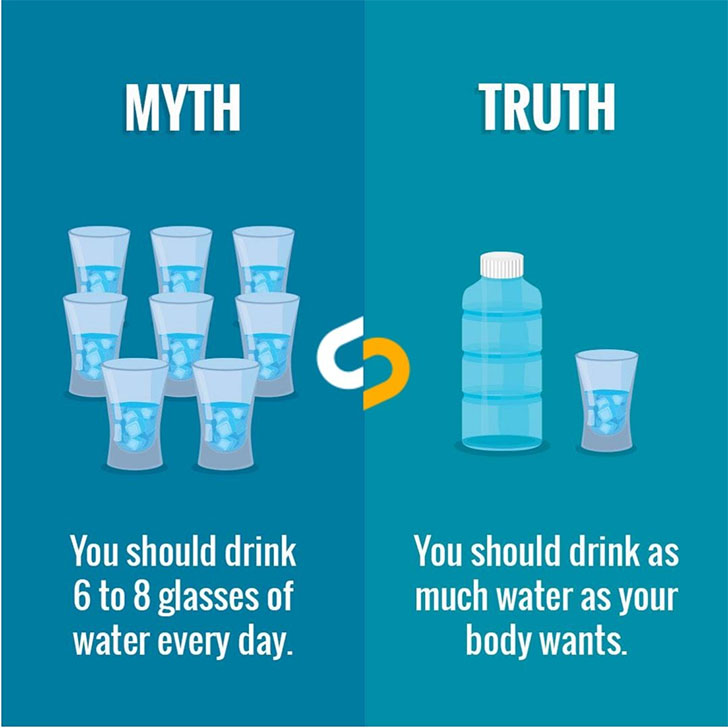
Instead of rigidly counting cups, it's wise to listen to your body's cues. Feeling thirsty? Drink up! Moist skin and pale-yellow urine are good indicators of proper hydration. Remember, it's about quenching your body's unique thirst, not just filling a quota! Cheers to smart sipping!
Myth: An Alarm Clock Wakes You Up Just Fine
The siren call of the alarm clock—a modern-day rooster crowing at dawn! But is it truly the best wake-up call? Shockingly, abrupt alarms can jolt us from deep sleep, leaving us groggy and disoriented, and it’s not the best for your health.
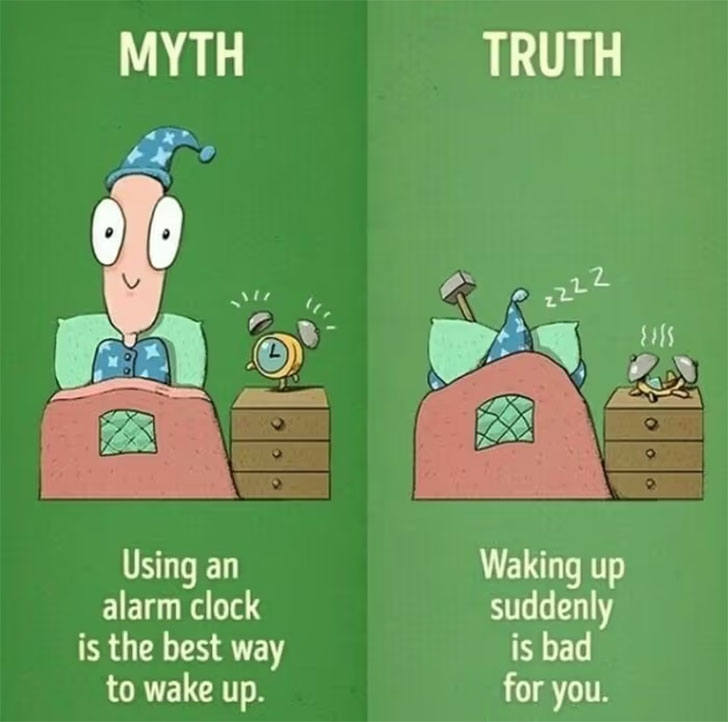
This "sleep inertia" can last hours, throwing off our A-game. Nature intended us to rise with the sun's gentle cues, not the blaring beeps of an electronic device. So, next time you set that alarm, remember: nature's rhythm beats technology's tune any day!
Myth: Thomas Edison invented the Light Bulb
Let's shed some light on a shocking revelation! Thomas Edison didn't actually invent the light bulb. Wait, what? While he's often hailed as its creator, Edison more accurately improved upon earlier designs, making them practical and long-lasting.
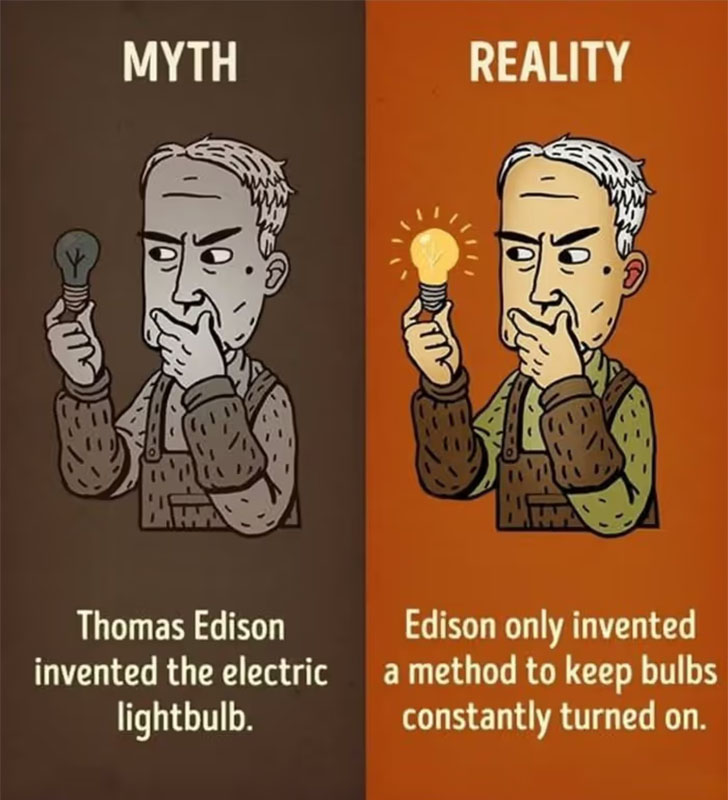
Many minds, like Sir Hiram Maxim and Sir Joseph Swan, illuminated the path before Edison. But it was Edison's version that truly brightened our world as he found a way to keep it constantly on. Sometimes, it's not about the first spark but making that glow endure! Remember some other background efforts even as we praise Edison for his work.
Myth: Wait 24 Hours Before Reporting a Missing Person
In the movies, we’ve seen it several times - a missing person is reported and they are instructed to wait for 24 hours first. Contrary to popular belief, there's no "24-hour waiting period" to report a missing person.
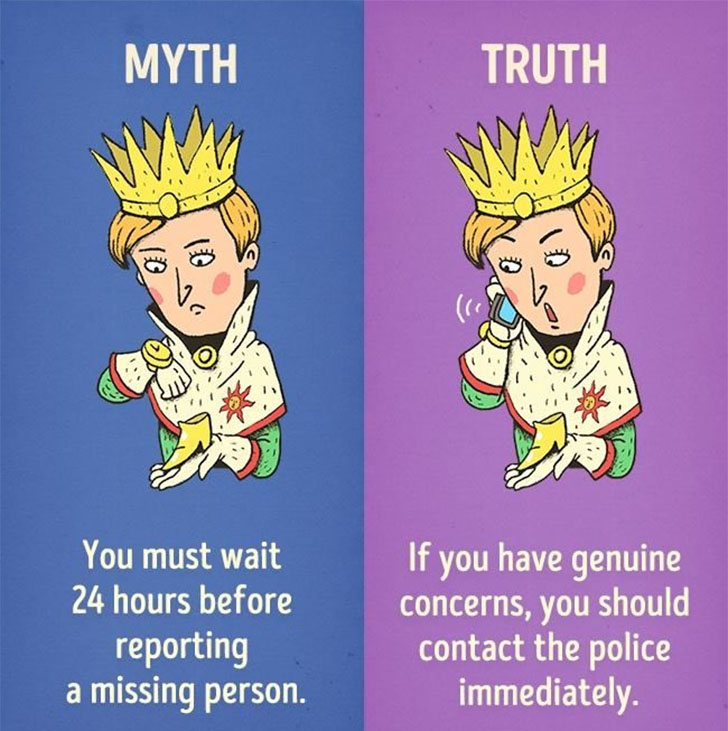
This misnomer, likely popularized by TV dramas, can delay crucial response time. In fact, the initial hours can be the most critical. If someone you know goes missing, act promptly. Contact the authorities immediately. Being informed shatters this dangerous myth, ensuring a swifter, potentially life-saving response!
Myth: Alcohol Provides Sweet Warmth to the Body
Raising a glass to keep warm on chilly nights? Think again! The toasty feeling from alcohol is a merry masquerade, and its warmth is not so sweet. While it causes blood vessels to expand, bringing warmth to the skin's surface, it actually lowers your core body temperature.
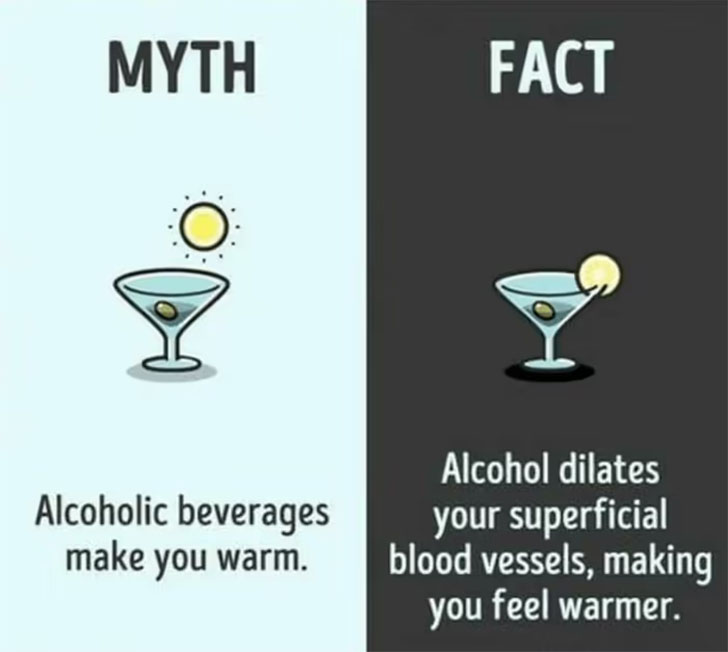
That rosy-cheeked glow? It's your body being duped, not truly warmed. So, while a nip might make you feel momentarily cozy, it's not the knight in shining armor against the cold. Cheers to warm blankets over deceptive drinks!
Myth: Vincent Van Gogh had His Entire Ear Cut
Ah, the tale of Van Gogh and his ear—a story that's more ear-resistible than truth! Contrary to the dramatic narrative, Van Gogh didn't lop off his entire ear. Take a pause to just how gruesome this gets.
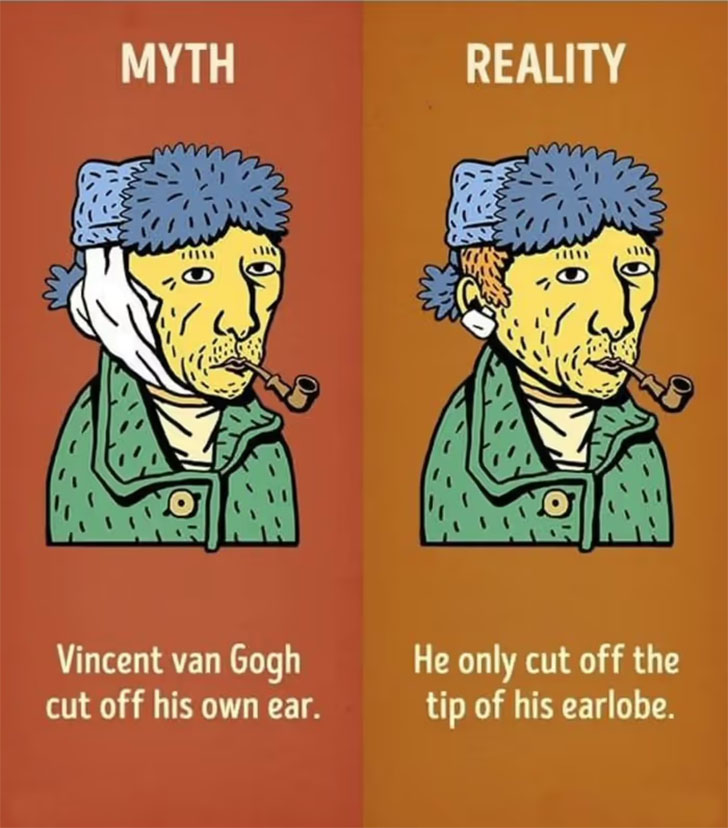
In a fit of anguish, he only severed a small portion of his earlobe. While it's a far cry from the whole ear, it still speaks volumes of his tormented psyche. Sometimes, the brushstrokes of myth paint bolder tales, but the intricate details hold the real masterpiece.
Myth: Chloroform Knocks You Out Instantly
Oh, the cinematic allure of chloroform, knocking out characters in seconds flat! In reality, it's not so instant. While chloroform can render someone unconscious, it takes several minutes of inhalation—not the quick whiff portrayed in movies.
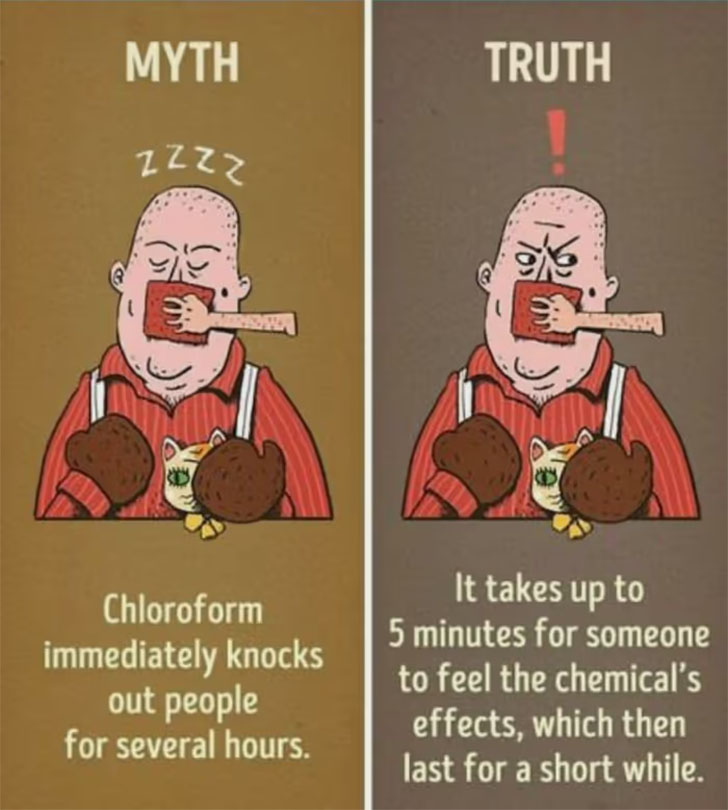
And when do they wake up? It's not after hours, but rather in a matter of minutes. Hollywood's depiction is a convenient plot tool, but in the real world, chloroform's not the rapid, long-lasting magic potion it's made out to be. Movie magic strikes again!
Myth: Don’t Read in the Dark, or Your Eyes Will Go Stark
Dive into a dimly lit book nook, and you might hear the age-old warning: "You'll ruin your eyes!" The twist? Reading in the dark won't etch permanent damage on your peepers, so you don’t have to fret.
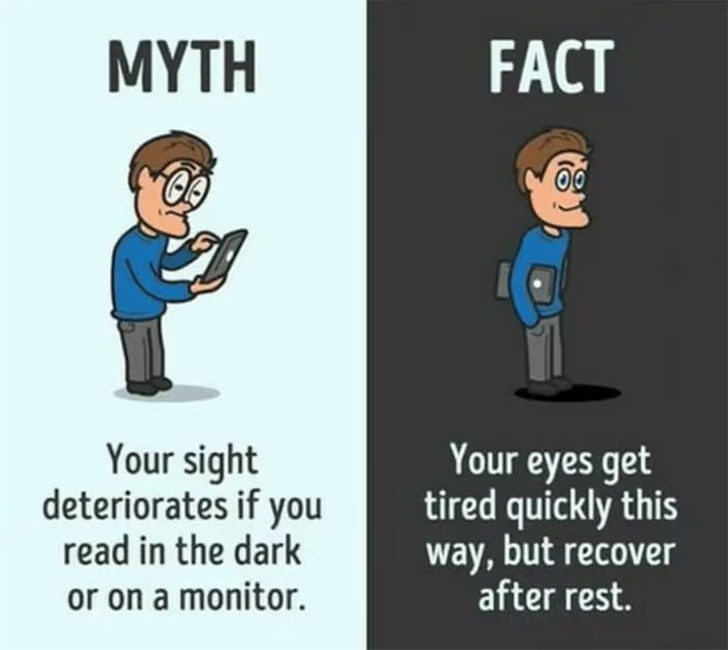
Instead, it strains the muscles, leading to temporary discomfort or fatigue. It's like making your eyes run a marathon without proper shoes. The advice? Illuminate those pages and give your eyes the comfort they crave. After all, every epic tale deserves its spotlight, and so do your eyes!
Myth: Napoleon was a Dwarf
Napoleon's stature in history is monumental. We’ve seen several depictions of him being a short person. But was he truly a pint-sized ruler? The buzz is: not really!

Contrary to the "short king" legend, Napoleon stood at about 5-foot-7—average for his time. The confusion? A mix-up between French and British units of measurement. While he might not tower over modern crowds, labeling him a mini-monarch is a tall tale. So, the next time someone mentions Napoleon's height, stand tall and debunk with style!
Myth: We Use Only 10% of Our Brains
Dive into the cranium conundrum: the 10% brain myth! Popularized by misinterpretations and flashy movie plots like "Lucy," many believe we're just skimming our cerebral surface. Science says otherwise, so don’t go on believing your brain needs more work.

MRI scans reveal we use much more than a mere 10%. In reality, virtually every part of our brain has a known function. So, while unlocking superhuman powers after tapping into the "unused" 90% is a captivating plot twist, our everyday actions already prove we're brainier than the myth suggests!
Myth: Arthritis is an Effect of Knuckle Cracking
There’s this joy when we hear the audible snap of knuckle-cracking! It has become a part of us to crack our knuckles every now and then, especially when less busy. However, many were warned it was a one-way ticket to Arthritisville.
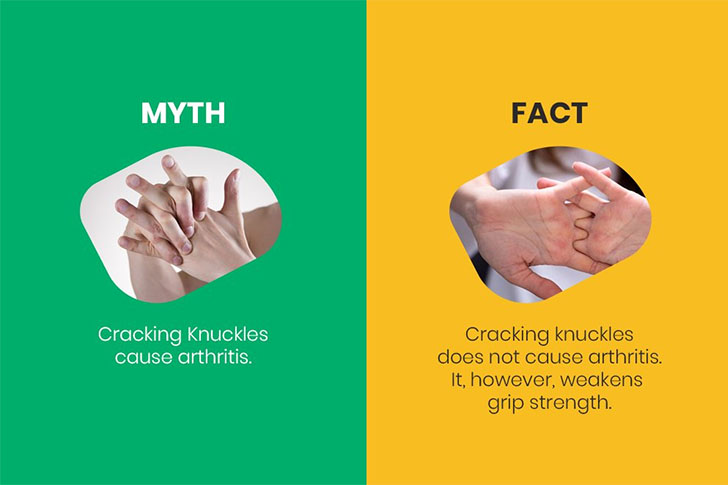
This enduring myth probably arose from the unnerving sound itself, but rest assured, research finds no link between knuckle-cracking and arthritis. However, frequent crack enthusiasts might experience reduced hand strength or swollen fingers. So, while the habit isn't as sinister as once thought, it's not entirely harmless either. Crack with care!
Myth: Oiling Relieves Scorching Burns
Oiling up a burn like a summer salad? Old wives' tales might endorse it, but science gives it the cold shoulder. Oils can trap heat, exacerbating the burn. Instead, the real remedy is a cool (not cold) water rinse, soothing the sting and reducing damage.
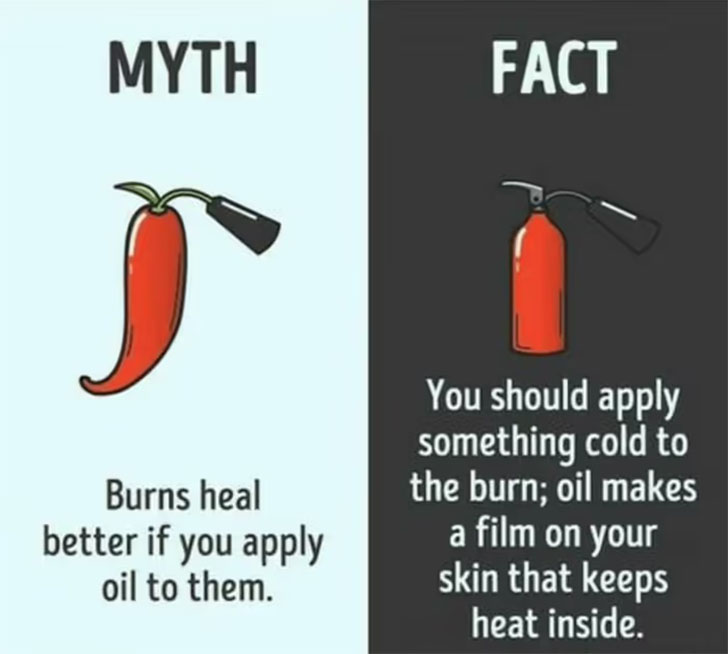
Once done, skip the kitchen concoctions and opt for sterile dressings or aloe vera. While oil makes for great salad dressing, it's best to keep it off the menu for burns. Safety first, folklore second!
Myth: Satellites Connect The Internet
Beam me up, Scotty! While many imagine the internet as a satellite symphony above, the truth is a tad more grounded. A vast majority of our global online traffic travels through undersea cables, not the starry skies.
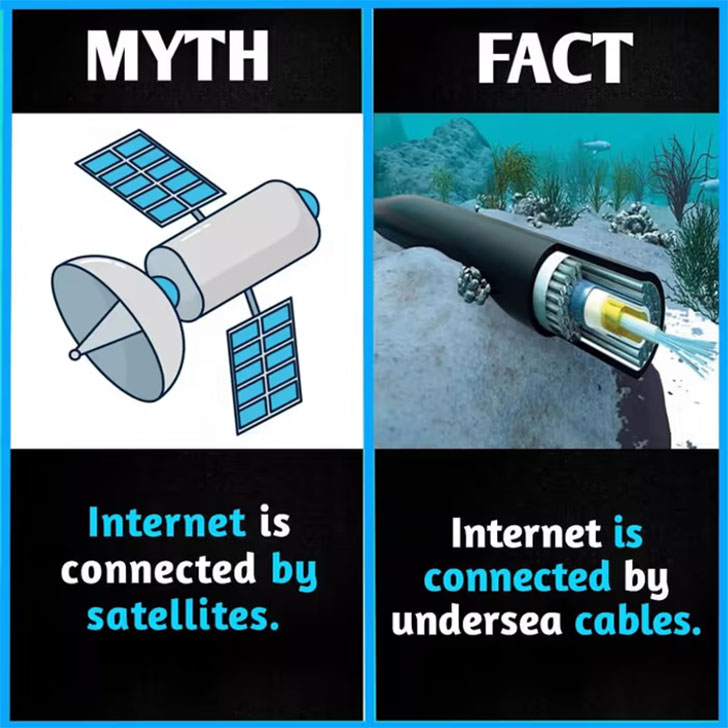
These cables, spanning continents, are the true unsung heroes of our binge-watching and endless scrolling. Satellites do play a part, but they're the backup singers, not the lead. Dive deep, not high, if you want to find where the internet truly lies! It’s interesting to realize just how “deep” our very own internet goes.
Myth: Keep the Phones off in a Lightning Storm
Dialing into the stormy myth that smartphones and lightning don't mix! While holding any metal object outdoors in a storm is risky, your smartphone isn't acting as a mini lightning rod. The real danger? Using corded phones, as lightning can travel through wiring.
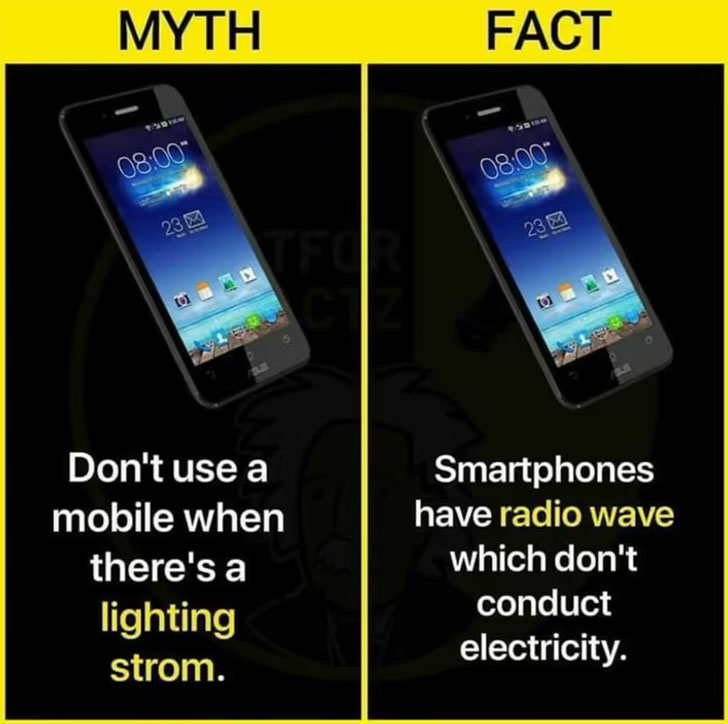
Your smartphone, on the other hand, operates wirelessly and can harm you in no way. Still, it's wise to exercise caution during nature's electric displays. Because while your smartphone might not beckon the bolts, staying safe is always the best call!
Myth: Brain Cell Growth Ceases in Adulthood
Have you ever thought your brain is done blooming post-adolescence? Well, think again! Contrary to the once-believed myth, your noggin doesn't call it quits on producing new neurons after youth.
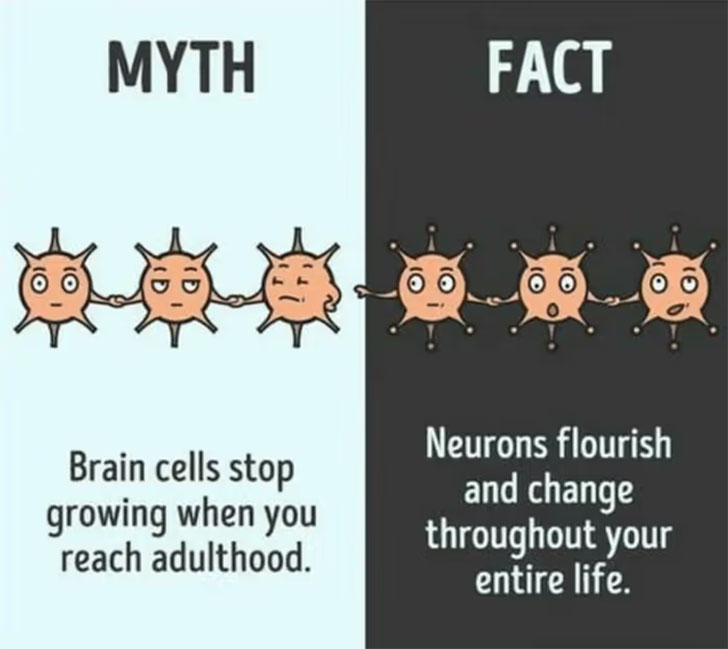
Recent studies, particularly in the hippocampus (the memory hub), show that neurogenesis (birth of neurons) continues into adulthood. So, while you're adulting, your brain's still sprouting fresh cells. This revelation adds a delightful twist to the narrative of aging—our brains are ever-evolving masterpieces, not static puzzles! Cheers to lifelong growth!
Myth: Don’t Touch a Baby Bird or Its Mother Rejects It
Picture this: a fragile chick, tainted by the "human scent", tragically ostracized by its mother. Touching, isn't it? So we stay clear from baby birds and secure their bonds with their mothers.
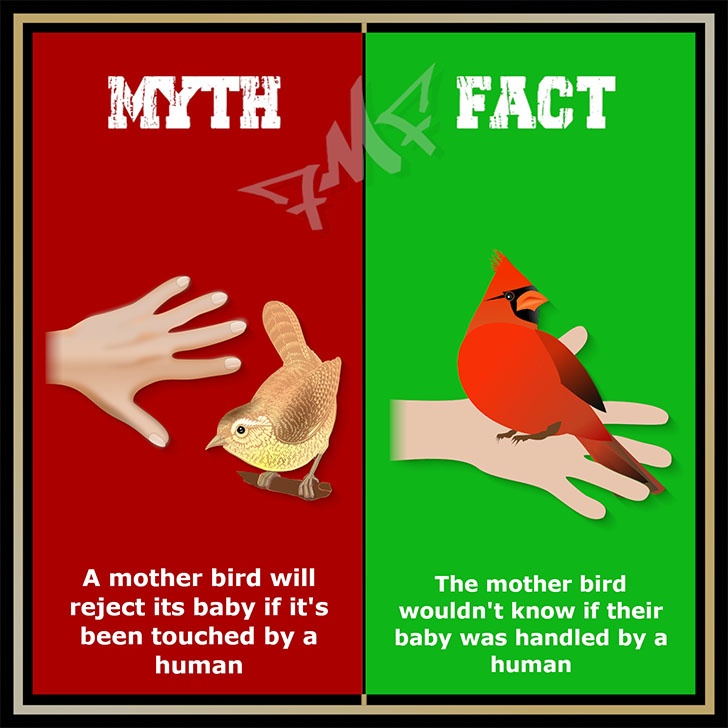
Good to know this is entirely fictional! While it's true human scent lingers, most birds have a limited sense of smell and wouldn't abandon their young over it. This myth likely originated as a well-intentioned cautionary tale to prevent children from disturbing nests. While meddling remains discouraged, it's not because Mama Bird holds a grudge against our cologne!
Myth: It’s All Thanks to Trees that We Can Breathe
Trees, the lung-equivalents of the earth? Not so fast! Yeah, they provide a good amount of oxygen, but the ocean does much more. As a matter of fact, it's actually marine plants, primarily tiny phytoplankton, that steal the oxygen-producing show, contributing a whopping 50-70% of Earth's oxygen.
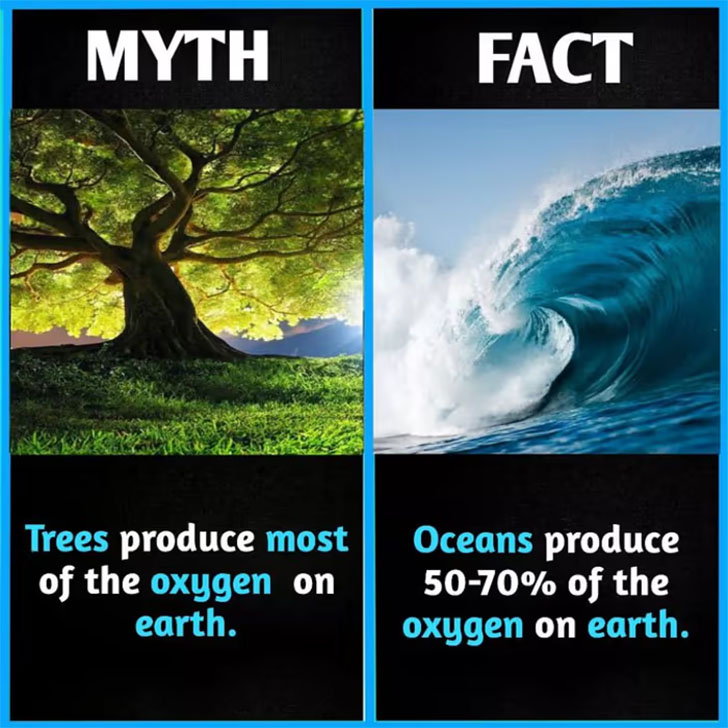
These microscopic marvels float in our oceans, quietly powering our planet. But wait, before you shrug off trees, they're vital for countless other reasons: ecosystem balance, carbon storage, and habitats. So while phytoplankton might be the unsung heroes of our air, trees still reign supreme in our terrestrial tale!
Myth: Dogs Only See Black and White
Who let the (color) dogs out? Dispelling the grayscale gossip, dogs aren't watching the world in monochrome. While they don't see the full rainbow spectrum like humans, our canine companions aren't colorblind. They perceive shades of blue and yellow, but reds and greens?
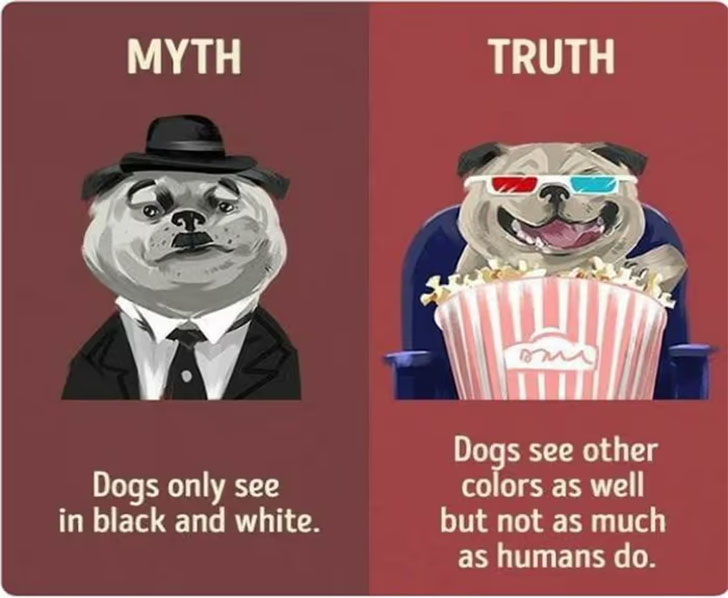
They're likely seen as grays. So, while your pup's world isn't a vibrant technicolor dream, it's not a drab black-and-white film either. Next time your furry friend fetches a toy, remember, they're enjoying it in their own hue-tiful way!
Myth: White Eggs Have Less Nutrients Compared to Brown
Here is the greatest debate among eggs you’ll ever come across. Some swear by the rustic charm of brown eggs, thinking they're packed with more nutrients. In reality, the color difference is due to the hen's breed, not the egg's nutritional content. Imagine how fun it is realizing it's all about the hen.
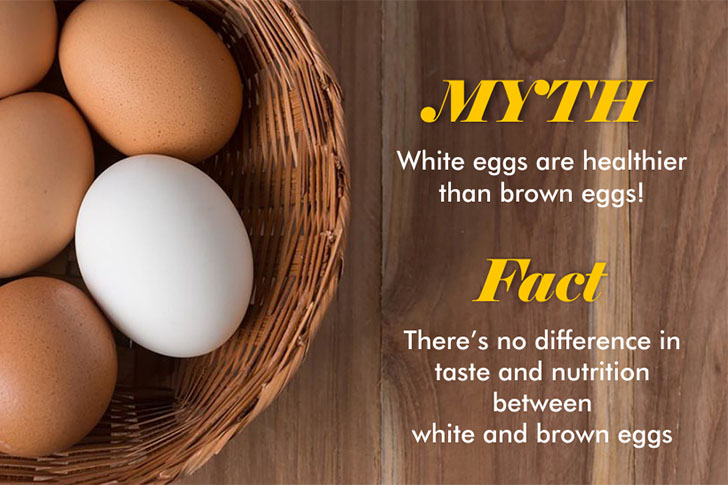
Both eggs boast similar nutrient profiles. The shell color is merely a hen's fashion statement. So, next time you're whipping up an omelet, remember it's what's inside that counts, not the hue of the shell!
Myth: A Knock From an Apple Inspired Newton
Did an apple bonk Newton into brilliance? Not quite! While the tale of a falling apple is legendary, it didn't exactly drop on his noggin. Too bad- that only made the story sweeter.
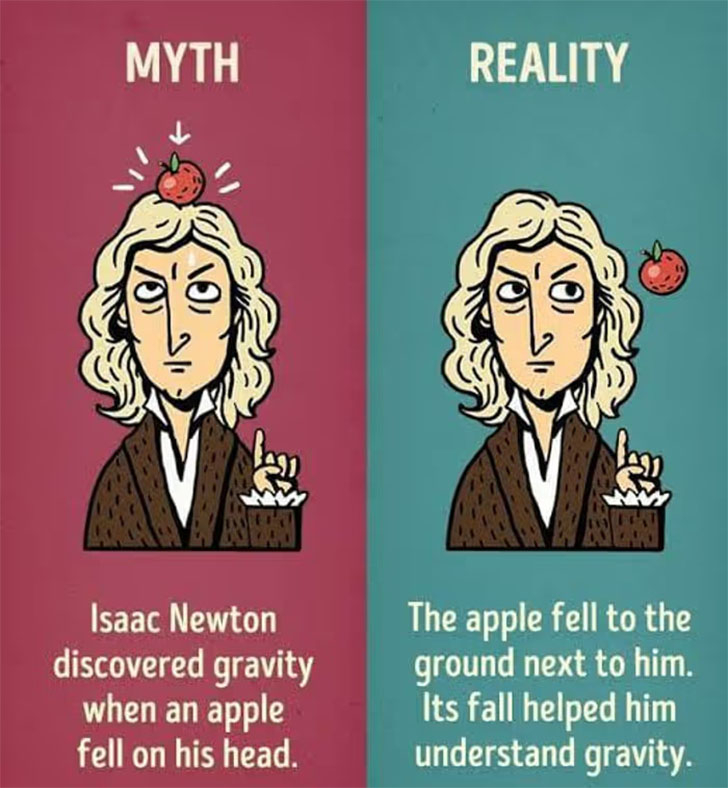
Observing an apple fall from a tree in his mother's garden, Newton began pondering why it fell straight down and not sideways. This curiosity led him to formulate the law of universal gravitation. So, while the apple might not have had a direct hit, its descent certainly struck a chord in Newton's genius mind!
Myth: Swimming After a Meal Causes Cramps
Let’s dive into this myth: swimming post-feast causes cramps. While digesting demands blood flow to the stomach, the idea that a quick dip will leave you cramped is a splash of exaggeration. While some might feel discomfort or slight cramping, for most, there's no major risk.

That said, a full-on butterfly sprint after a buffet? Maybe not the best idea whether this is true or false. The truth floats somewhere in between: listen to your body and dive in when you feel comfortable!
Myth: Brush Your Teeth After Every Meal
Brushing post-binge is best? There are so many tooth-related deceptions, so not so fast! If you've just had acidic or sugary foods, immediate brushing can spread that acid, eroding enamel.
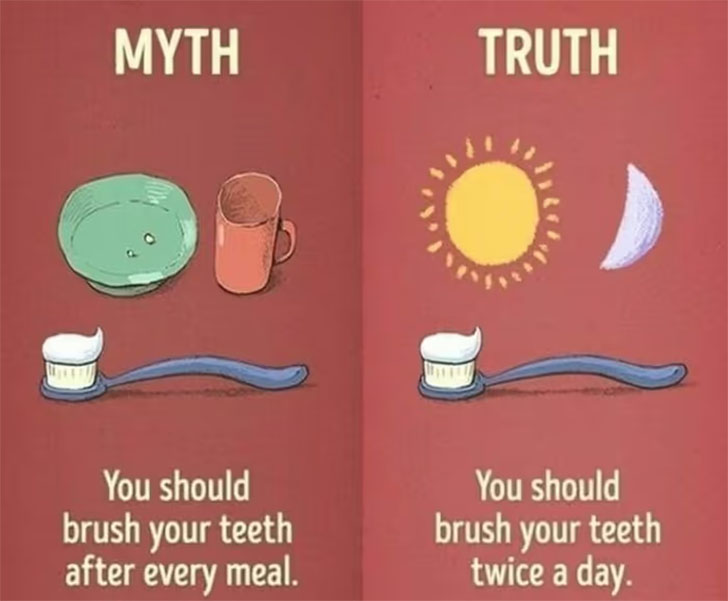
The toothy truth? Wait about 30 minutes after eating to brush, allowing saliva to neutralize acids. And while brushing enthusiasm is commendable, twice daily with fluoride toothpaste is the gold standard. So next meal, resist the urge for an instant brush-off and give your chompers a brief breather before their spa treatment!
Myth: Marie Antoinette Said “Let Them Eat Cake”
Ah, Marie Antoinette, forever tied to that decadent line, "Let them eat cake!" Yet, historians agree she probably never uttered it. The phrase was first penned by philosopher Jean-Jacques Rousseau in "Confessions" when Marie was only a teen, predating her reign.

Its association with her, however, has less to do with fact and more with her image as an out-of-touch royal. Alas, she never served up this slice of scandal; it's just a delicious historical embellishment! That doesn’t change the fact it was actually said though.
Myth: Salieri’s the Villain; He was Jealous of Mozart
Did Salieri's green-eyed monster target Mozart? Blame that on dramatic flair! While the film "Amadeus" showcased a jealous Salieri plotting Mozart's downfall, history sings a different tune. The two composers, contemporaries in 18th-century Vienna, actually respected each other's work.

Some of Mozart's compositions even featured Salieri's themes. Though they were rivals, no murderous envy lurked in Salieri's score. Sometimes, art embellishes reality for the sake of a riveting story—but truth hits a more harmonious note! It’s funny how time and tide rewrites history easily.
Myth: The Special Declaration of Independence Was Signed On July 4th
Ah, July 4, when the Founding Fathers inked their names, right? Not quite! There’s more to it that history probably let out but we’re too adamant to note. While Congress adopted the Declaration of Independence on July 4, 1776, most delegates didn't sign until August 2.

So, the fireworks should technically continue for a month, celebrating not just the day of adoption, but the drama-filled days leading up to that grand signing. It seems the pages of history sometimes need a bit of a fact-check. Celebrate wisely!
Myth: We See the Great Wall of China from Space
Have you heard about spotting the Great Wall from space? That’s just another celestial tall tale! This iconic structure, stretching over 13,000 miles, was built to ward off invasions, not catch alien eyes, in case that’s what you heard.

Astronauts confirm that, from space, most man-made structures, including the Wall, blend into nature's vast canvas. Instead, it's wide structures like roads or airports that stand out more. So while the Wall's history is monumental, its space visibility is just another earthly exaggeration!
Myth: Mending Split Ends With Shampoo and Conditioners
There’s the idea that you can mend split ends with your shampoo. That's a slippery myth! Split ends, the fraying or splitting of hair shafts, resulting from stress, heat, or wear. While certain shampoos and conditioners can temporarily mask or prevent them, they can't truly repair.
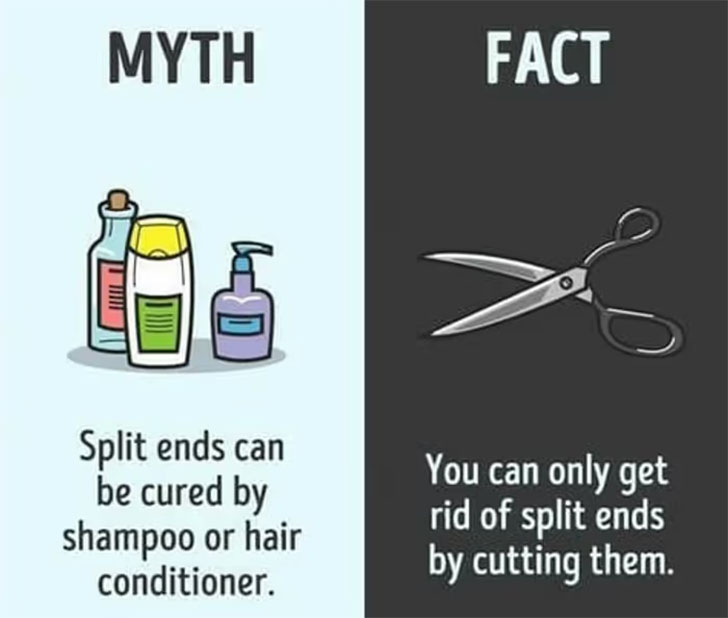
Like a frayed rope, once it's torn, it's done. The real remedy? A good trim! It's the only surefire way to bid adieu to those frayed tips. So, while lathering might feel luxurious, scissors save the strand day!
Myth: Piranhas are Going to Eat You!
Ever envisioned piranhas as ravenous maneaters, thanks to pop culture? Plot twist: these fish aren't on the prowl for a human snack! While they have razor-sharp teeth and a taste for meat, piranhas are primarily scavengers and nothing like what the movies depict.
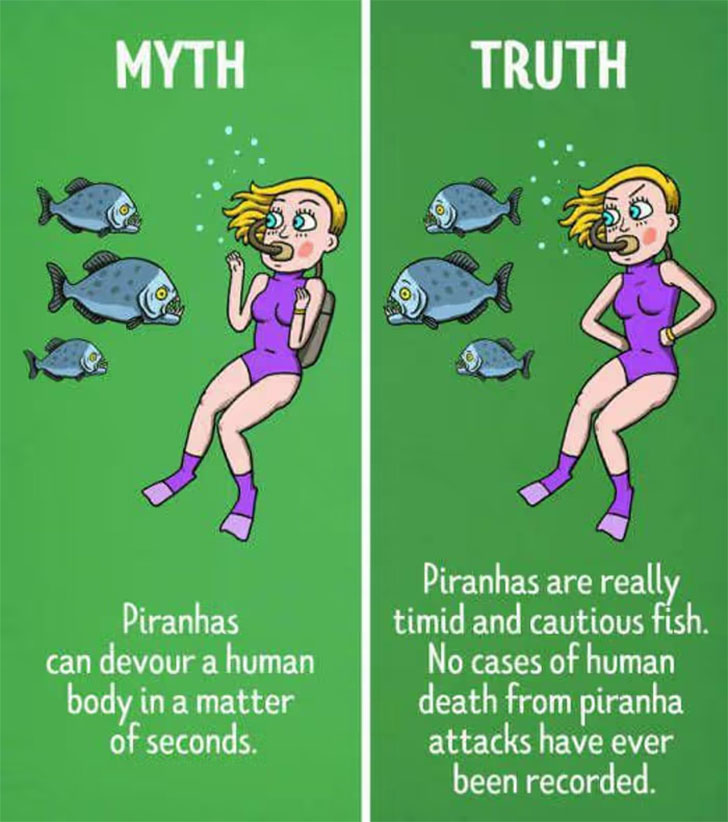
They prefer feasting on insects, worms, or dead organisms. Human attacks? Rare, and usually when they feel threatened or food-starved. So, next time you hear about a school of piranhas approaching, don't jump to Jaws-level panic—it's probably just dinner time, not dinnertime!
Myth: Chocolate is a Villain to the Body
So you’ve come across the notion that chocolate is a villain. Sweetly mistaken! While gobbling down heaps of sugary confections isn't wise, dark chocolate, in moderation, can be a delightful health ally.
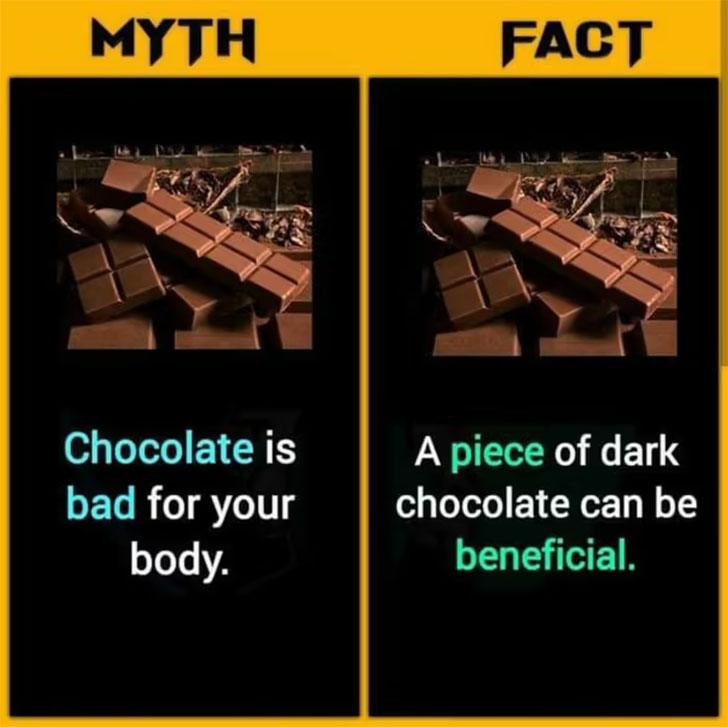
Packed with antioxidants and flavonoids, it supports heart health, boosts mood, and even combats oxidative stress. The trick is in the cocoa content—the darker, the better! Remember: Moderation is key. So, savor that silky square, and revel in the joy that chocolate can be both delicious and beneficial!
Myth: An Apple a Day Keeps the Doctor Away
We’ve all heard the popular phrase “An apple a day keeps the doctor away.” An apple a day as a doc-dodging strategy? It's a crisp oversimplification! Apples, with their fiber and vitamins, are undoubtedly health champions. But relying solely on this fruity favorite won't stave off all ailments.
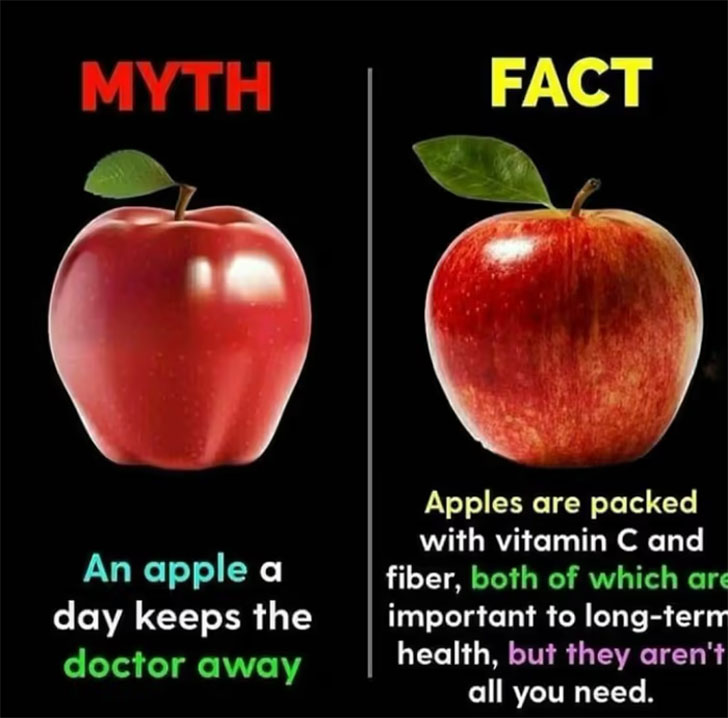
A balanced diet brimming with a rainbow of fruits, veggies, and other nutrients is your true health shield. Think of apples as just one of the healthful heroes in a dietary dream team. Munch away, but remember: variety's the real spice of life—and health!
Myth: The Chameleon Change Colors to Hide
Do chameleons change their colors to camouflage? Are chameleons the masters of hide-and-seek? Partially true, but there's more hue to the story! While these colorful critters can match their surroundings, they primarily change colors to communicate emotions, establish dominance, or react to temperature and light.
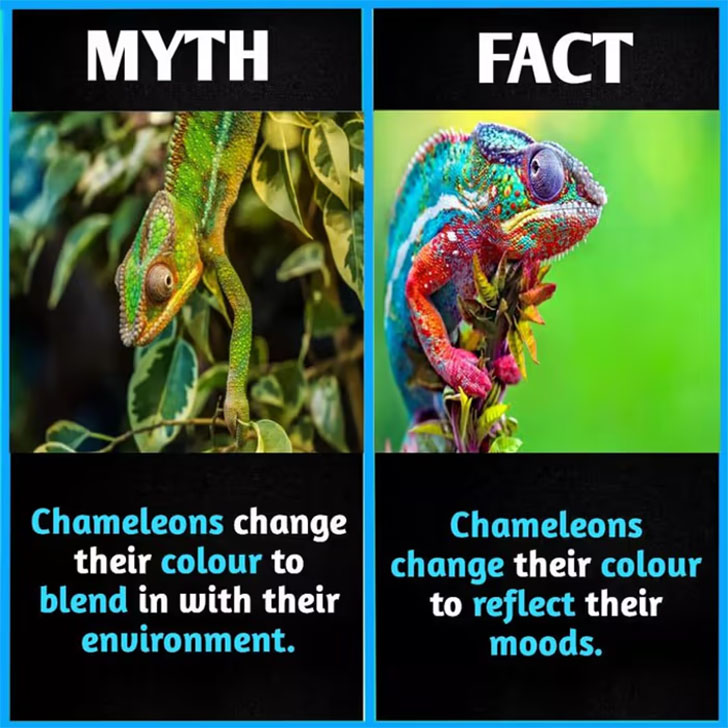
A chameleon might don a dark tone to soak up heat or flash vibrant patterns during a feisty display. There are feelings involved. So, while they're not always playing camouflage, they're certainly making a statement! Color us impressed!
Myth: The Red Color Stirs the Angry Bull
Think bulls rage at red? Bullseye myth! Like other cattle, bulls are color-blind to red; sorry to burst your bubble. It's not the color of the matador's cape that gets the bull charging, but its movement.
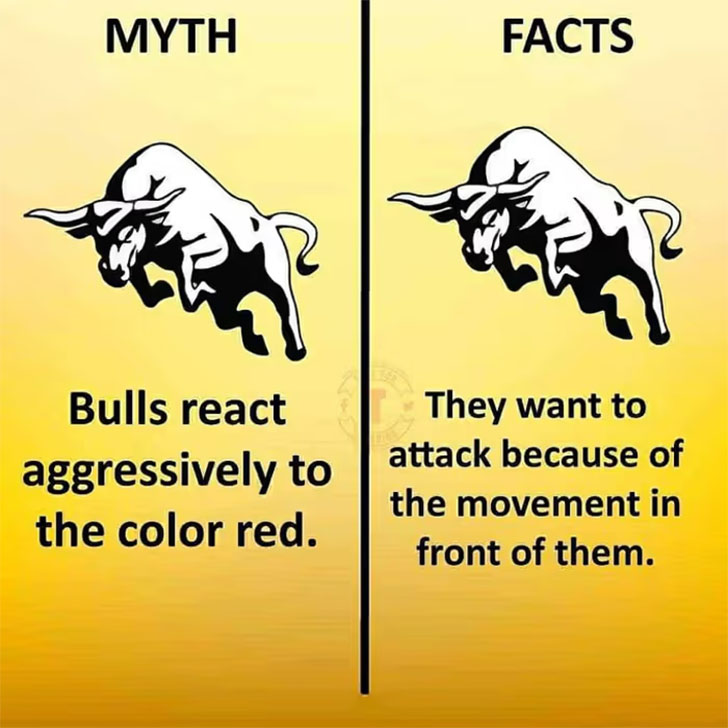
Matadors' swirling, flamboyant actions incite the reaction. The bright red? It's more for dramatic flair—and perhaps to mask any blood. So next time you see a matador dancing with danger, remember: it's the performance, not the palette, that's got the bull by the horns!
Myth: Goldfish Only Have a Three-Second Memory
There are ideas that goldfish don’t have a long-term memory. In fact, they are believed to have only three seconds of memory. That's a fishy tale! In reality, these orange swimmers boast a memory span of months. Experiments have shown that goldfish can remember feeding routines, navigate mazes, and even recognize their owners.

Their little brains, it seems, are more adept than folklore gives them credit for. So, the next time you pass a goldfish bowl, give them a nod—they might just remember your face and the myth you debunked!
Myth: You Get a Cold in a Cold Weather
Chilly weather, the sneaky cold culprit? Each time catch a cold, we blame it on the dropping temperatures. Myth-busted! Cold temperatures don't conjure colds. Viruses, particularly rhinoviruses, are the real sneeze-starters.
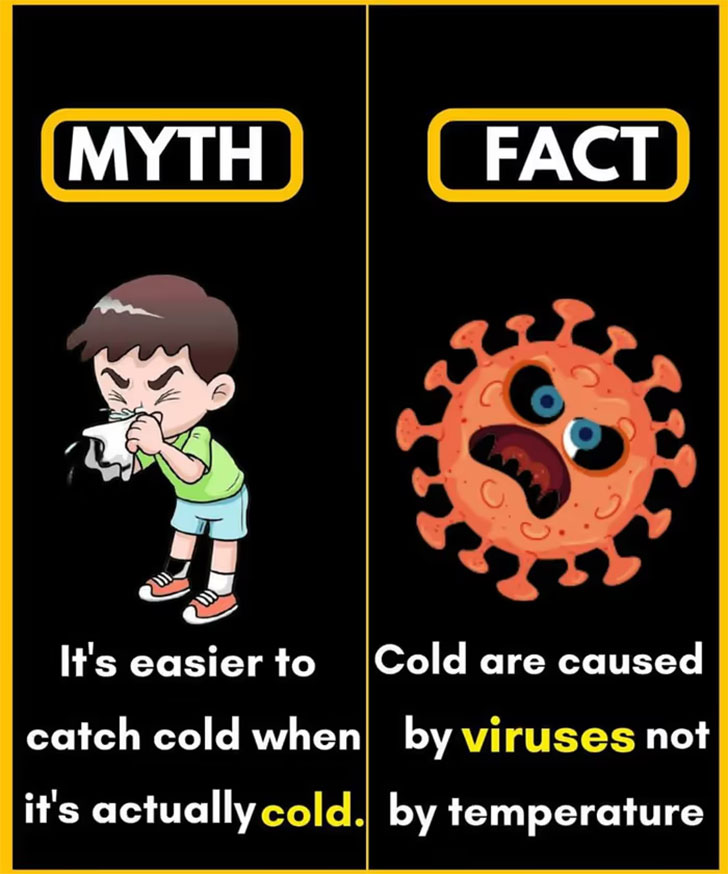
It's just that during colder months, we huddle indoors, making it easier for germs to spread. Want to dodge the sniffles? Regular hand-washing and avoiding close contact with sick folks are your best bets. So, next time the mercury dips, don't blame the breeze—just remember to wash and weave through the sneezers!
Myth: George Washington Had Wooden Chompers
A little bit of a vampire tale here. Some people came to believe that George Washington had wooden chompers. Bite into some real history! While America's first president did grapple with dental woes, his dentures weren't crafted from timber.

Instead, they were an intricate mix of human teeth, animal teeth, and materials like lead, gold, and ivory. Imagine the dental bills! As iconic as his leadership, Washington's dental adventures remind us to not simply take myths at face value, but to "brush" up on the facts!
Myth: Einstein was a Dullard
There are some ideas that Einstein was a classroom dud. It helps convince children that with just a little more seriousness they’re great geniuses. While the genius behind relativity did face some academic hurdles, labeling him a poor student is an oversimplification.

In subjects like mathematics and physics, young Einstein shone brilliantly. However, he often clashed with the rigid educational methods of his time and struggled with languages, especially French. Einstein's story isn't about failing grades, but rather a curious mind not confined by traditional classrooms. So, "E=mc²" but "Einstein ≠ bad student"!
Myth: A Penny from the Top of the Empire State Building Can Kill
Everyone who knows this story will find the death-by-penny-from-Empire-State myth interesting! This tall tale claims a penny's descent could be lethal. A drop from the top is capable of killing you.
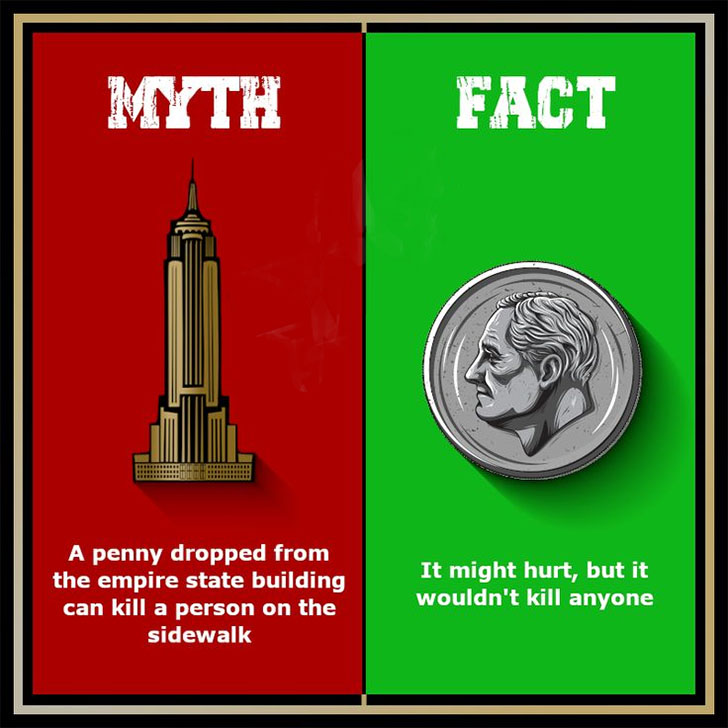
In reality, thanks to its flat shape and aerodynamics, a penny would reach terminal velocity at about 50 mph—fast, but not deadly. If one did hit you (after evading the building's setbacks), it'd sting for sure, but it wouldn't spell your end. It's more a testament to urban legends than to physics!
Myth: Hair and Nails Keep Growing in the Grave
Ever imagined the deceased sporting Rapunzel-like hair or Wolverine claws in the coffin? Chuckle-worthy as these visuals are, they're myths! One cannot really come up with how such an idea became popular amongst us today. Perhaps, some horrible sight or occurence that may have happened in the past.

Post-mortem, cells lack the nutrients to promote growth. What actually happens is the skin dehydrates and retracts, giving an illusion of growth. So, no cryptic hair salons or manicures, just science debunking spooky tales!
Myth: Polar Bears are Snow White
While polar bears are often depicted with gleaming white fur, their coats are actually colorless and translucent. The illusion of white comes from how their fur scatters and reflects light. Beneath this seemingly white exterior, polar bears surprise us with their true colors—literally!
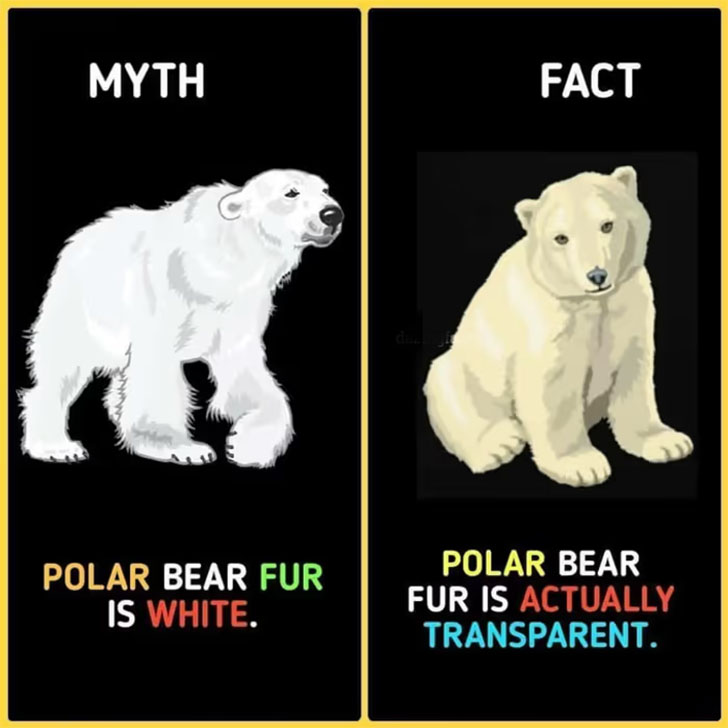
Their skin is jet-black, a clever adaptation that helps them soak up and conserve heat from the Arctic sun. So, the next time you picture a polar bear as a pure snow-white icon, remember there's a hidden world of science beneath those seemingly pristine fur layers!
Myth: Hyperactivity is Thanks to Sugar
Sugar rushes and wild kiddos—seems like a direct correlation, right? Surprise! Multiple studies find no consistent evidence linking sugar to hyperactivity in children. It’s all about the children.
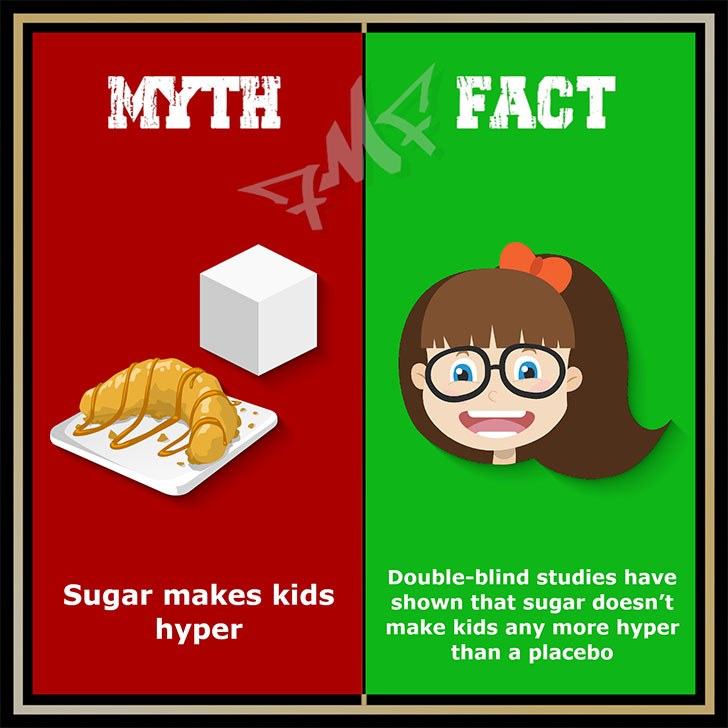
Hyperactivity is a legitimate behavioral condition, but blaming it on sugar might be a bit off the mark. It's possible that the excitement of events (think birthdays or holidays) where sugary treats abound is the real culprit. So, next time the kids are bouncing off the walls, consider the context, not just the candy!
Myth: Humans Have only Five Senses
The classic five senses—sight, smell, taste, touch, and hearing—barely scratch the surface. Humans are sensory powerhouses! Ever sensed balance? Thank the vestibular sense. Felt hunger? That's interoception. Known where your limbs are without looking? Say hello to proprioception. It goes on and on.
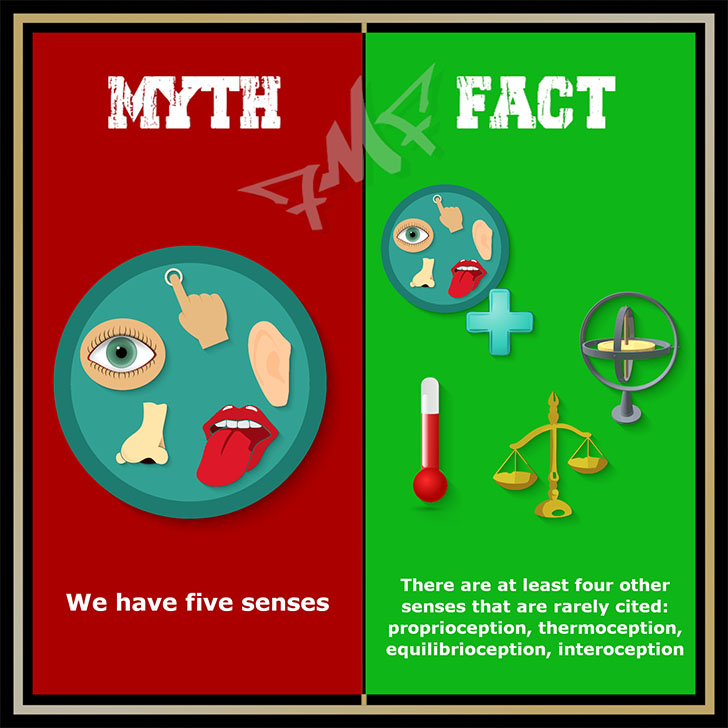
We even sense temperature changes, pain, and time. Our body is constantly buzzing with info, well beyond the famous five. So, next time you sense something's amiss, trust those instincts; you've got more than just five senses backing you up!
Myth: Charging Overnight is a Smartphone Killer
Ever heard that charging your phone overnight spells doom for its battery? Think again! Modern smartphones come equipped with smart charging tech that stops juicing up once they reach 100%. It's like giving your phone a curfew—it knows when to call it a night.
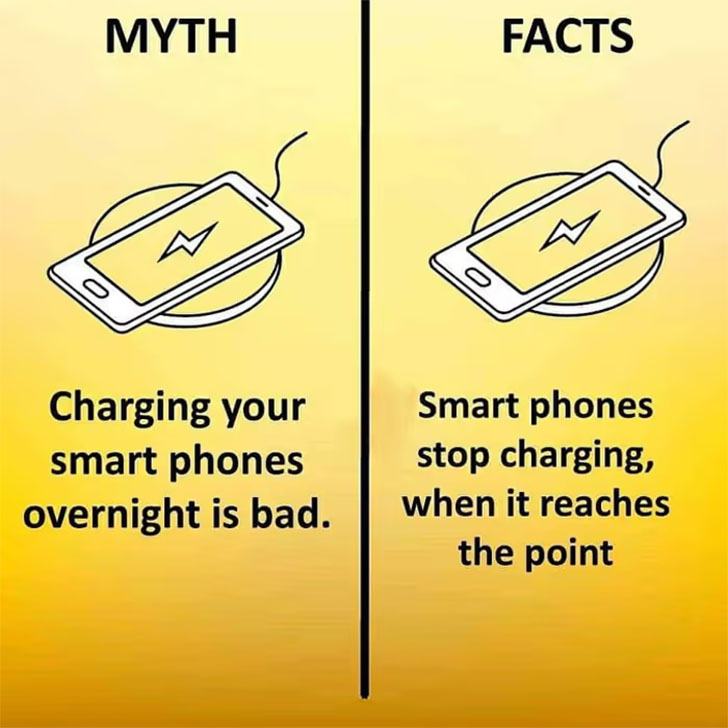
Occasional overnight charges won't wreak havoc on its health. However, like all things in life, moderation is key! To keep your battery spry, avoid making it an everyday ritual. So, sleep tight and let your phone enjoy a balanced diet of electrons!
Myth: The Cold Causes the Deep Sleep
Ever thought chilly temperatures send animals into deep slumbers? Think again! While we often associate hibernation with winter's icy embrace, it's not just about the cold. It's a survival strategy, allowing creatures like bears, hedgehogs, and ground squirrels to conserve energy when food is scarce.
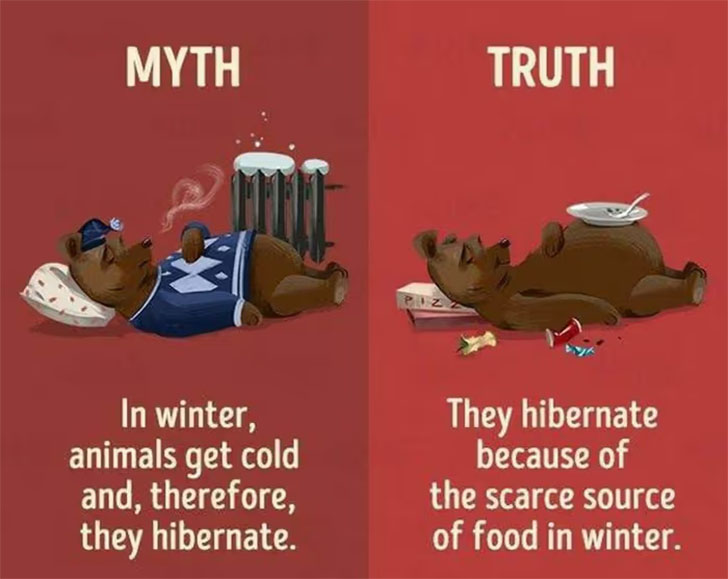
These biological power naps are primarily triggered by diminishing food supplies and hormonal changes, rather than just temperature drops. So, next time you imagine animals dozing due to snowfall, remember, it's their in-built survival tactic at play!
Myth: Sweat Cleanses Out Toxins
Breaking a sweat might give you those post-workout endorphins but as a toxin-removal system? Not so much! The myth of sweating out "bad vibes" is a tad oversold. While sweat does expel trace amounts of toxins, it's primarily water, salt, and proteins.
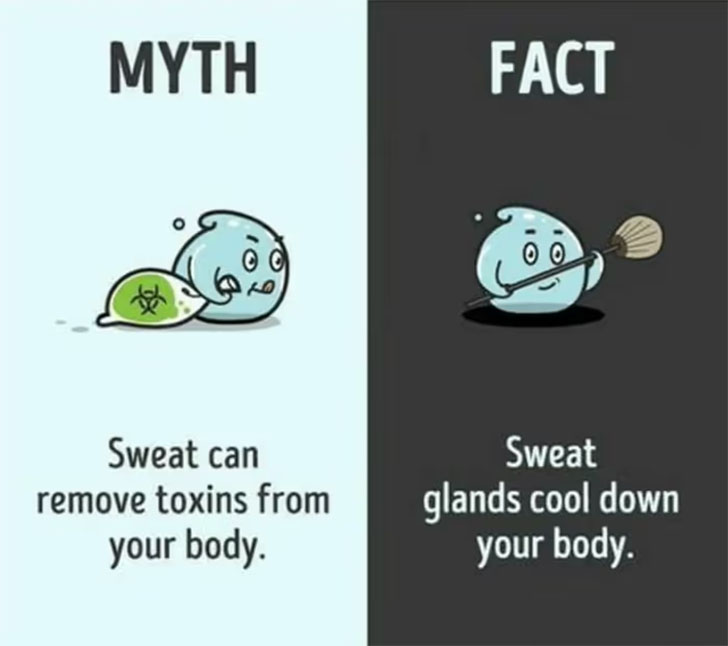
Most detoxifying heavy lifting is done by our liver and kidneys. So, next time you hit the sauna or treadmill aiming for a detox, remember: you're mostly just giving those sweat glands a workout, not cleansing your inner sins!
Myth: Walt Disney Fathered Mickey Mouse
Whispered tales and hushed tones suggest Walt Disney himself sketched the iconic Mickey Mouse first. But peel back the layers of this frosty conspiracy, and you'll find it was, in fact, Ub Iwerks, Disney's right-hand man, who first brought Mickey to life.
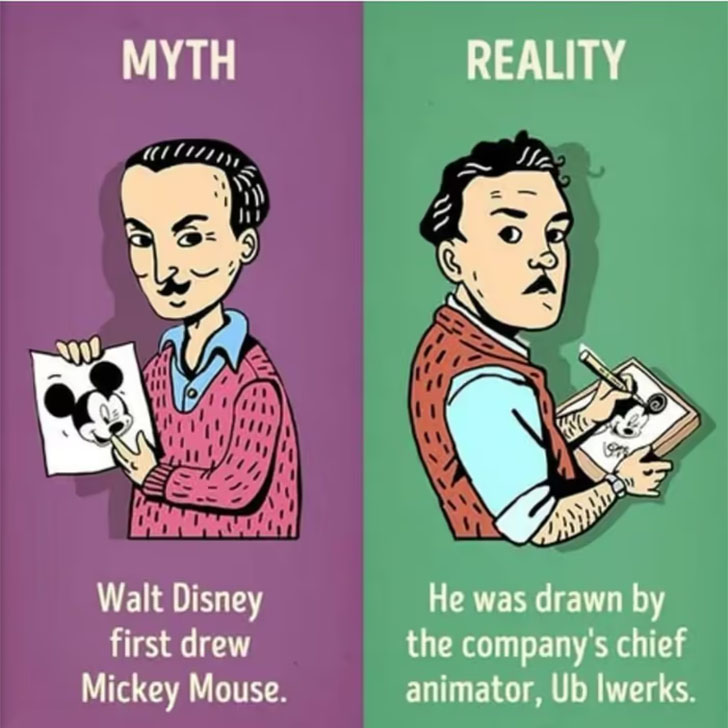
While Walt provided the inspiration and voice, it was Iwerks' artistic prowess that crafted those recognizable round ears. The Mouse House has its secrets, and behind every legend, there's a shadowy figure with a pencil, sketching the truth.
Myth: King Cobra - God of Venom
Sorry, King Cobra—you might wear a crown, but you're not the deadliest in the venom game! While King Cobras are incredibly venomous, they don't hold the title of the most venomous creature.
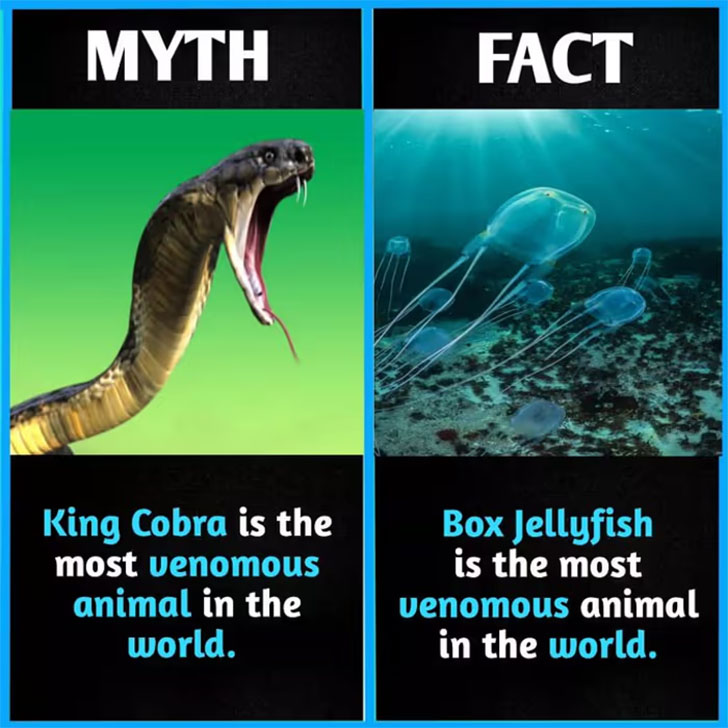
Enter the box jellyfish, the real royalty here, with venom that can be fatal to humans in just minutes. So, while the cobra's hiss might send shivers down your spine, it's the silent drift of the box jellyfish that truly reigns supreme in the venomous kingdom. Talk about an underwater plot twist!
